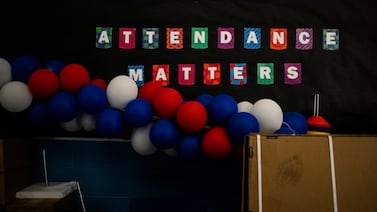Sign up for Chalkbeat New York’s free daily newsletter to keep up with NYC’s public schools.
New York City families can now see their students’ state test scores from the last school year, though broader data has yet to be released.
The individual scores, released Wednesday as the first full week of school is underway, come later than usual. A change to the state’s learning standards, which required an overhaul of the exams and scoring, delayed the results.
Every spring, schools administer standardized exams in reading and math to third through eighth grade students. The test scores offer one look at how students are faring.
The 2023 exams followed the “Next Generation Learning Standards,” which were established after revisions from the controversial Common Core. The new standards sought to clarify previously vague language, such as outlining specific theorems students had to learn in geometry.
Since it was the first time the new standards were used, state education officials had to develop new “cut scores,” or metrics used to measure student proficiency.
State officials have yet to release overall data for kids across the city or state. But schools Chancellor David Banks said the city’s test scores were up in both reading and math during an appearance on ABC7.
State officials warned against interpreting the scores that were distributed Wednesday. They did not specify when they expect to release more comprehensive data, though noted teachers and principals had received reports over the summer on how their students performed on each test question.
The state’s Department of Education provided individual student test scores to districts and families for “programming and instructional services, as well as parent engagement,” Commissioner Betty Rosa said in a statement.
“After ensuring that all student results are accounted for and final data quality checks, the Department will release the aggregate data statewide by district, school, and other subgroups,” Rosa said. “As such, accurate inferences about how districts and the state are doing overall cannot be made until the data is finalized.”
The state Education Department also urged against making comparisons to prior years because the exams were changed to match the new learning standards.
“You wouldn’t compare your U.S. history class to your physics class, because it’s measuring something different,” said Zachary Warner, assistant commissioner of the department’s Office of State Assessment, in an interview last week.
“But with that said,” he added, “we do want people to look and say, ‘Are kids meeting the expectations of the learning standards?’ So you could look backwards and say, ‘Okay, on those standards, here’s how kids were doing. On the new standards, here’s how kids are doing.’”
Families can view their students’ test scores in their NYC Schools Accounts. (To set up their accounts, families need their child’s student identification number as well as an account creation code from their child’s school.)
Julian Shen-Berro is a reporter covering New York City. Contact him at jshen-berro@chalkbeat.org







